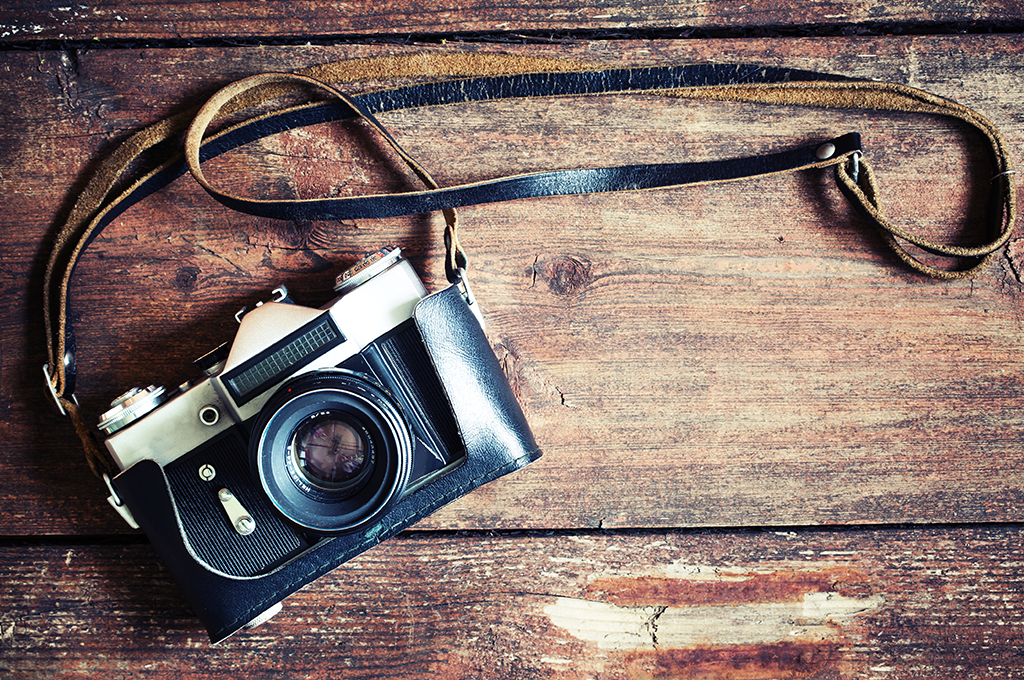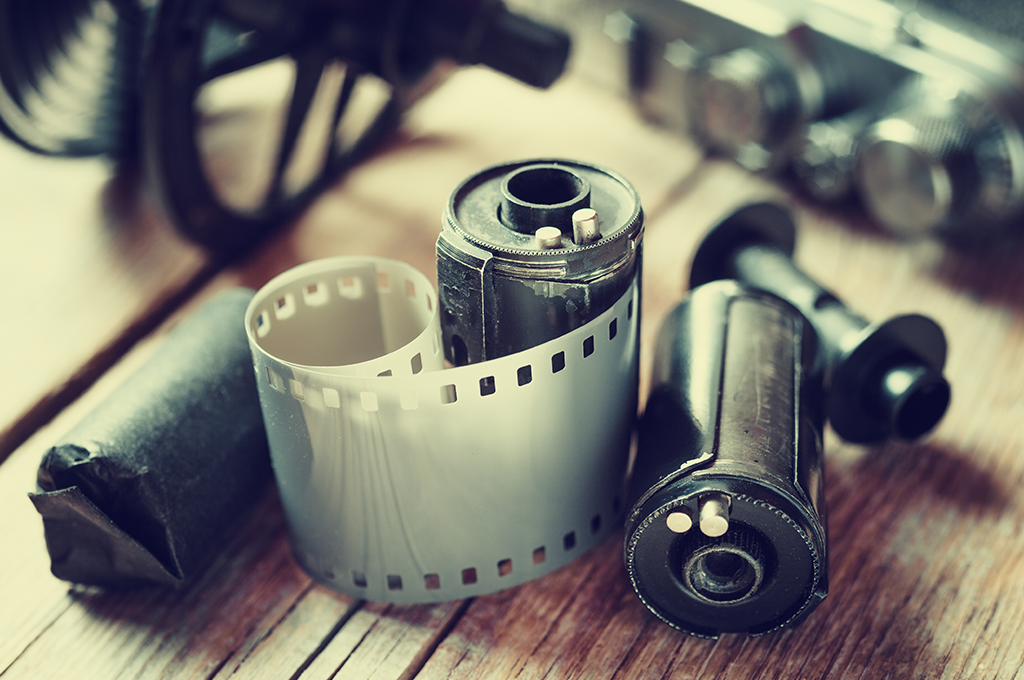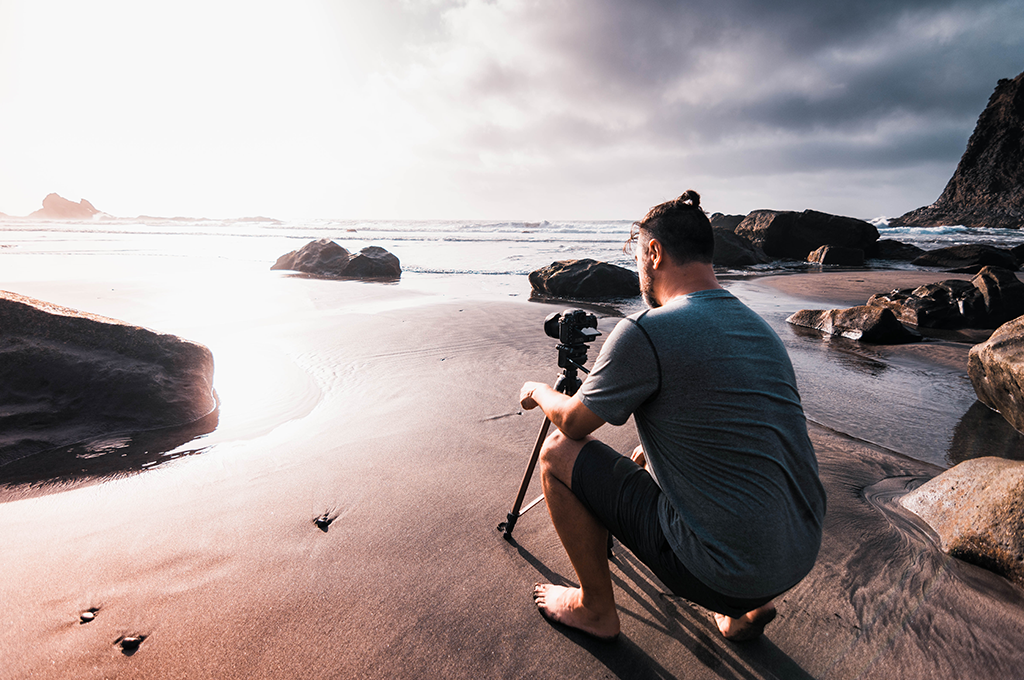A Guide to Using Expired Film

Introduction
These days everyone can be a photographer, we all have access to good quality photography equipment in the form of our smartphones and digital cameras. But there’s something a bit more authentic about good old film photography.
We’re all used to seeing an image on a screen before we take the actual shot, we know exactly what we’re going to get and if we don’t like it, we can manipulate it a bit, maybe add the odd filter here and there. So how do you add to the experience? How do you get the shot that nobody else is going to get? This is where expired film comes in.
What is Expired Film?
To put it simply, expired film is film that is past its use by date.
First of all, it’s helpful to understand what photographic film is actually made of, so we can understand why it has a use by date in the first place.
Film is made up of several layers of emulsion that are smeared onto strips of plastic, some of these layers are full of light sensitive chemicals, with dyes mixed in for colour film, that produce an image when exposed to light, and all kinds of things can affect this sensitivity including time, temperature and humidity. Throw in the fact that dyes in colour film all deteriorate at different speeds and you have a whole new world of unpredictable results.
The use by date is the date by which the manufacturer can be certain the film won’t have lost any of its sensitivity, but even within that time there’s no way of knowing how film has been transported or stored so you might be buying film rated 800 ISO that is in reality 400 ISO.
The film will still work after its use by date, but deterioration kicks in about two years after manufacture. It’s a gradual process and can be affected by all kinds of things and, until you develop it, there’s no way of knowing how your particular roll of film has been affected and whether it’s even useable. So why do people do it? Let’s take a look.
Why Shoot with Expired Film?
Shooting with expired film is a great way to experiment, it adds an element of the unknown as there’s no way of knowing its history. But often, this unpredictability is all part of its appeal; at a time when we have all kinds of technology at our fingertips to produce the perfect picture, it can be quite appealing to produce something unique.
There’s a real lean towards vintage items in popular culture at the moment, from clothing and vinyl records to typewriters and calligraphy so, in the same way that someone might prefer to listen to vinyl instead of downloading music digitally, it’s easy to see why someone might want to leave things to chance for a more ‘authentic’ experience. As with listening to your favourite band on vinyl, no two people will get the same experience.
There’s also the fact that it can be cheap, especially if you find some lying around, or you buy in bulk.
And don’t forget, nothing tests your skills as a photographer like using expired film.

What is the Best Way to Store Film?
There are many different theories out there about how you should store your expired film, although one of the worst things you can do with film is expose it to heat. The chemicals in the emulsion don’t respond well to high temperatures so how it’s been stored affects the film as much as how old it is.
Putting your expired film in the freezer as soon as you get it can halt any damage and stop the film deteriorating any further, even if you can’t reverse the damage that’s already been done. However, if you’re going to use the film fairly soon, i.e., within a month, then it will be fine just stored away from heat and light. If it’s going to be a bit longer, up to six months, then keep it in a sealed bag in the fridge.
Anything longer than that and the freezer is your best bet. This will halt the damage and stop the film degenerating even further. Whether you store it in the fridge or the freezer, the key is to remember to bring it back to room temperature as slowly as possible, especially as old film can become brittle.
Where can you Buy Expired Film?
The easiest place to look is in your own house; people often have old film lying around in their lofts or garages, and more often than not in that drawer that everyone has in their house, the one that’s full of old keys and takeaway leaflets.
It can also be found in charity shops, car boot sales and jumble sales, you just have to have the patience and the time to sift through everything.
You can also get hold of expired film online, particularly eBay and Etsy and often in bulk. There are also specialist websites that sell expired film, and people on photography forums often swap or buy from other forum users.
It might also be worth asking in specialist photography shops, or even getting in touch with professional photographers who are retiring.
Wherever you get it from, always ask if the seller knows how the film was stored and if they’ve used any film from the same batch, so you’ve got a rough idea of the age/quality. If it’s possible, buy two rolls so you have a test one. If you don’t know how old the film is, a quick internet search of the packaging might give you a rough idea.
Will Expired Film Damage my Camera?
There’s no need to worry about damaging any of your equipment, the only negative effect you’ll get is with the actual quality of the photographs.
But it’s always worth insuring your precious equipment, you can get a quote for camera insurance here with a range of optional benefits to suit you
What is the Best Expired Film to Use?
There are a few things to take into consideration when thinking about which expired film to use. Of course, depending on how you acquired it, you might not have much choice in the matter, but if you do there are a few things to think about:
Age – The older the film, the more pronounced the effects and the more chance the film has of being unusable. Of course, the other side of this is the older the film, the more chance that there isn’t very much of it around, or it might even have been discontinued, which makes it even more unique as you’ll have access to something nobody else has.
Speed – Higher speed film ages much quicker and is more likely to have fogging, so the higher the ISO, the faster it will degrade.
Colour/Black and White – Black and white film ages much more gracefully than colour film, there are no colour dyes in the emulsion, just the silver halides and while these do become less sensitive to light over time, meaning they need more light to record an image, they still stand up to the ravages of time better than coloured film.
Development – Some development processes, such as the K – 12 and K – 14, just don’t exist anymore, particularly for pre-1997 film, and while it can be possible to recreate obsolete processes, often the required chemicals don’t exist and even if they did, you’d need at least a basic understanding of the principles of chemical safety. It can be possible to develop the film as black and white, but you’re not guaranteed satisfactory results.
The fact is, there is no best type of film to use, although any film that has been stored badly will be in no fit state to give you the results you want, whilst film that has been stored in the freezer since the day it was bought could be as good as fresh film you can buy today.
What Sort of Photographic Effects Can I Expect?
It’s hard to predict what kind of effects you’re going to get; even film from the same batch can behave differently, there are so many unknown factors.
Black and white film can be very grainy; this gets more pronounced the older the film, there can also be the odd bit of mottling and some spots. Colour film is more unpredictable and there can be huge differences depending on how old it is and how it was stored. Saturation could be reduced, which will give you more muted colours, and different dyes age differently so there’s no way of knowing which way they’re going to shift. Pale blue, for example, could appear with more of a purple hue, but the fun thing, or the stressful thing, depending on how you look at it, is there is no way to predict how they’ve aged.
It’s safe to expect your colours to be less vibrant, and the contrast to be less pronounced, but often fogging, and muted colours can produce effects not dissimilar to modern filters.

Tips for Using Expired Film
The best tip when shooting expired film is, of course, to know your film. The more you know about how old it is, how it’s been stored, where it came from, the kind of film it is, the speed; the more prepared you can be. However, by the very nature of it, this isn’t always possible, so we’ll have a look at some general advice for how to get the most from your expired film.
A. Overexposure
This is a bit of a contentious topic within the industry, some people say that you should add one stop of exposure for each decade it’s been expired. For example, for a 400 ISO film that expired in 2012, you would treat it like it’s a 200 ISO. Which is all very well but you still don’t know how the film has been stored or handled. You’ll also get different results with different cameras; for example, older cameras have limited ISO settings.
There’s another school of thought that says that if film has been stored well it can be shot at the speed it says on the box, even with film up to 20 years old. Anything older than that and you could try adding half a stop of exposure. If you’re just working with black and white film, you could also try pushing it when developing it, although bear in mind that doing this alongside overexposure could intensify any graining.
B. Bracketing
Bracketing means you capture a few different exposures of the same scene; usually one standard image, alongside a darker/underexposed shot and a light/overexposed one, this increases your chances of getting the effect you’re after, or at least finding one you like. However, with expired film, instead of having a standard shot and one either side, you might want to try having a standard shot and then two stops over.
This is particularly useful if you have more than one roll as you can do this with your ‘experimental’ roll to find what works best.
C. Use more light
This is the main thing to remember because of the loss of light sensitivity. This is fairly easy to deal with; you could either shoot outdoors in broad daylight, or use a flash, even when you wouldn’t normally. The final image might be grainier, and the contrast won’t be as pronounced but often that can lend an atmospheric feel to the photograph.

Conclusion
The key to using out of date film is accepting that you can’t control the outcome, there are too many variables to consider. If you’re doing a professional shoot, or on a once-in-a-lifetime holiday, this isn’t the time to experiment.
But, in our largely digital world, using expired film is a way of getting a unique image that can’t be recreated with a digital camera, even with filters and editing software. This alone is a great reason to give it a go; the worst that can happen is you won’t get an image at all, but as long as you go into it with an open mind and prepare for the worst you might just be pleasantly surprised. Who knows, you might even discover a whole new style of your own while experimenting. Just remember, it’s not better or worse, it’s just different!
All content provided on this blog is for informational purposes only. We make no representations as to the accuracy or completeness of any information on this site or found by following any link on this site. We will not be liable for any errors or omissions in this information nor for the availability of this information. We will not be liable for any loss, injury, or damage arising from the display or use of this information. This policy is subject to change at any time.
We offer a variety of cover levels, so please check the policy cover suits your needs before purchasing. For your protection, please ensure you read the Insurance Product Information Document (IPID) and policy wording, for information on policy exclusions and limitations.







